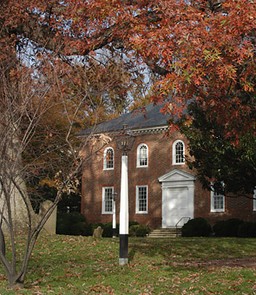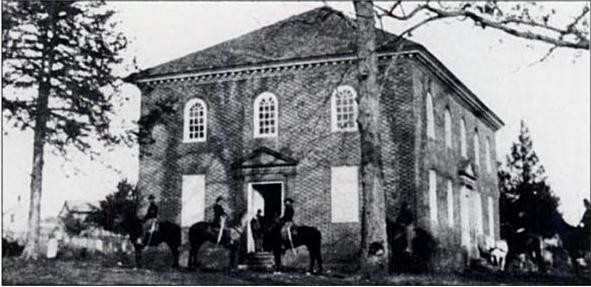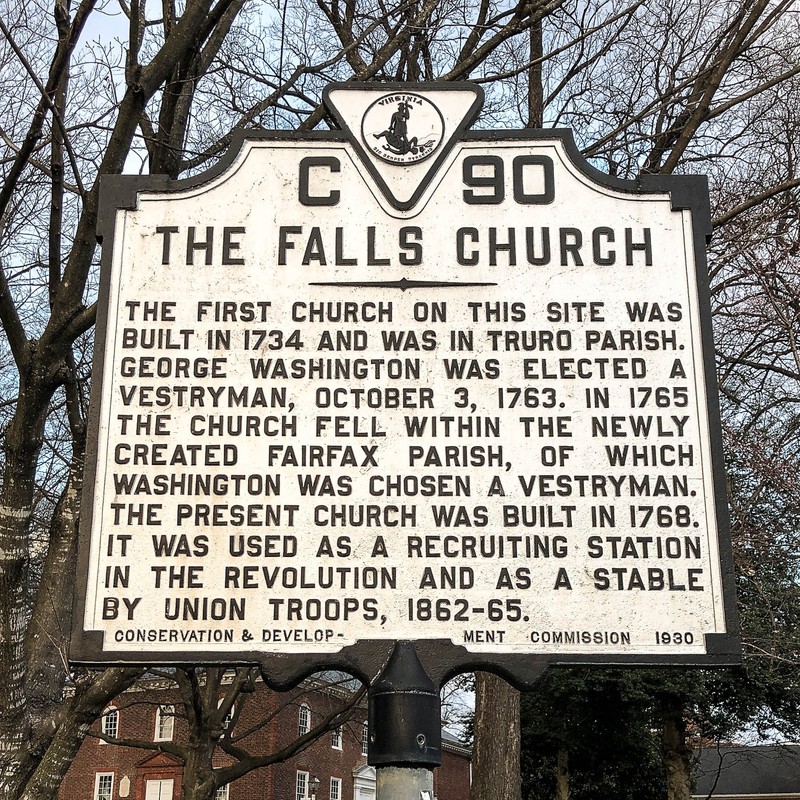The Falls Church
Introduction
Text-to-speech Audio
Images
The Falls Church in Autumn

Union cavalry outside of the Falls Church during the Civil War

The Falls Church historical marker

Backstory and Context
Text-to-speech Audio
In 1732, construction began on the chapel
that would be known as the Falls Church. The structure was completed in
October of the following year. Built by
Colonel Richard Blackburn, and named
“William Gunnell’s Church” after a landowner from Westmoreland County who set
up a parish in his home, the original building was made of wood. The vestry book later called it the Falls Church
in 1757, as it was located on the main tobacco rolling road from the Little
Falls of the Potomac River. Shortly
afterward, the community that grew around the church adopted this name.
In 1763, George Washington became a vestryman of the Falls Church. As the original wooden structure had begun to rot, Washington and George William Fairfax served as church wardens responsible for contracting for a new church building.3 The current building, designed by Colonel James Wren and finished in 1769, still stands to this day.
During the American Revolution, the church was a recruitment station for
the Fairfax militia. Legend has it that the Declaration of Independence was
read to the local citizens from the steps of the south doors of the
church.
After the Revolution, the Falls Church was temporarily abandoned because of the disestablishment of the Anglican church in the United States. The building reopened in the 19th century as an Episcopalian church. The outbreak of the Civil War, however, disrupted church services. From the beginning of August until the end of September in 1861, the Falls Church was occupied by the Confederates. Union troops seized control of the village and its namesake church by the following year. From 1862 until 1865, the Falls Church was used by the Union army as a hospital, and later as a stable for horses. After the war ended, restorations to the church’s interior began and services resumed.
Today, the Falls Church is the oldest remaining church
building north of Quantico, Virginia, and is still in use. The church structure is the original 1769
building, except for the post-Civil War repairs and a chancel extension, which was added to the structure in 1959. In 2006, a dispute between "continuing Episcopalians" and church members who disagreed with the ordination of gay bishops resulted in a fight over the property that went all the way to the Supreme Court. The Episcopalians prevailed.
Sources
Moody, Jr., James W. National Register of Historic Places Inventory - Nomination Form. Virginia Department of Historic Resources. February 26, 1970. February 11, 2019. https://www.dhr.Virginia.gov/VLR_to_transfer/PDFNoms/110-0001_Falls_Church_1970_Final_Nomination.pdf.
